LTCC-Integrated Dielectric Resonant Antenna Array for 5G Applications
Abstract
:1. Introduction
2. Single Element DRA Design
2.1. Conventional CDRA Design in LTCC
2.2. New CDRA Design with a Grooved Superstrate
3. Antenna Array Design
3.1. Geometric Arrangement of Array Elements
3.2. Inter-Element Spacing
3.3. Feeding Network Design
4. Results and Discussion
5. Conclusions
Author Contributions
Funding
Institutional Review Board Statement
Informed Consent Statement
Data Availability Statement
Acknowledgments
Conflicts of Interest
References
- Palomares-Caballero, A.; Alex-Amor, A.; Valenzuela-Valdes, J.; Padilla, P. Millimeter-Wave 3-D-Printed Antenna Array Based on Gap-Waveguide Technology and Split E-Plane Waveguide. IEEE Trans. Antennas Propag. 2021, 69, 164–172. [Google Scholar] [CrossRef]
- Yang, Q.; Gao, S.; Luo, Q.; Wen, L.; Ban, Y.-L.; Yang, X.; Ren, X.; Wu, J. Cavity-Backed Slot-Coupled Patch Antenna Array With Dual Slant Polarization for Millimeter-Wave Base Station Applications. IEEE Trans. Antennas Propag. 2020, 69, 1404–1413. [Google Scholar] [CrossRef]
- Mrnka, M.; Cupal, M.; Raida, Z.; Pietrikova, A.; Kocur, D. Millimetre-wave dielectric resonator antenna array based on directive LTCC elements. IET Microw. Antennas Propag. 2018, 12, 662–667. [Google Scholar] [CrossRef]
- Haraz, O.M.; Elboushi, A.; Alshebeili, S.A.; Sebak, A.R. Dense dielectric patch array antenna with improved radiation characteristics using ebg ground structure and dielectric superstrate for future 5G cellular networks. IEEE Access 2014, 2, 909–913. [Google Scholar] [CrossRef]
- Khalily, M.; Tafazolli, R.; Xiao, P.; Kishk, A.A. Broadband mm-Wave Microstrip Array Antenna with Improved Radiation Characteristics for Different 5G Applications. IEEE Trans. Antennas Propag. 2018, 66, 4641–4647. [Google Scholar] [CrossRef]
- Meredov, A.; Klionovski, K.; Shamim, A. Screen-Printed, Flexible, Parasitic Beam-Switching Millimeter-Wave Antenna Array for Wearable Applications. IEEE Open J. Antennas Propag. 2019, 1, 2–10. [Google Scholar] [CrossRef] [Green Version]
- Abohmra, A.; Jilani, F.; Abbas, H.; Ghannam, R.; Heidari, H.; Imran, M.A.; Abbasi, Q.H. Low-profile Flexible Perovskite based Millimetre Wave Antenna. In Proceedings of the IEEE MTT-S 2019 International Microwave Biomedical Conference, Nanjing, China, 6–8 May 2019. [Google Scholar]
- Ashraf, N.; Sebak, A.R.; Kishk, A.A. Packaged Microstrip Line Feed Network on a Single Surface for Dual-Polarized 2N×2M ME-Dipole Antenna Array. IEEE Antennas Wirel. Propag. Lett. 2020, 19, 596–600. [Google Scholar] [CrossRef]
- Dzagbletey, P.A.; Jung, Y.B. Stacked microstrip linear array for millimeter-wave 5G baseband communication. IEEE Antennas Wirel. Propag. Lett. 2018, 17, 780–783. [Google Scholar] [CrossRef]
- Cheon, Y.; Kim, Y. Stripline-fed aperture-coupled patch array antenna with reduced sidelobe. Electron. Lett. 2015, 51, 1402–1403. [Google Scholar] [CrossRef]
- Alkaraki, S.; Gao, Y. Mm-Wave Low-Cost 3D Printed MIMO Antennas with Beam Switching Capabilities for 5G Communication Systems. IEEE Access 2020, 8, 32531–32541. [Google Scholar] [CrossRef]
- Ntawangaheza, J.d.D.; Sun, L.; Yang, C.; Pang, Y.; Rushingabigwi, G. Thin-Profile Wideband and High-Gain Microstrip Patch Antenna on a Modified AMC. IEEE Antennas Wirel. Propag. Lett. 2019, 18, 2518–2522. [Google Scholar] [CrossRef]
- Ta, S.X.; Park, I. Low-Profile Broadband Circularly Polarized Patch Antenna Using Metasurface. IEEE Trans. Antennas Propag. 2015, 63, 5929–5934. [Google Scholar] [CrossRef]
- Maruyama, S.; Fukusako, T. An interpretative study on circularly polarized patch antenna using artificial ground structure. IEEE Trans. Antennas Propag. 2014, 62, 5919–5924. [Google Scholar] [CrossRef]
- Oh, K.H.; Song, J.I. Investigation of surface-wave reduction in UC-PBG patch antenna by using a transient electrooptic near-field mapping technique. IEEE Trans. Antennas Propag. 2006, 54, 3602–3607. [Google Scholar] [CrossRef]
- Chang, W.; Jung, D.Y.; Park, C.S. A surface wave reduced higher mode circular patch antenna for 60GHz LTCC SiP. In Proceedings of the Asia-Pacific Microwave Conference, Suzhou, China, 4–7 December 2005; Volume 4, pp. 3–5. [Google Scholar]
- Petosa, A.; Ittipiboon, A. Dielectric resonator antennas: A historical review and the current state of the art. IEEE Antennas Propag. Mag. 2010, 52, 91–116. [Google Scholar] [CrossRef]
- Kishk, A.A. Dielectric resonator antenna, a candidate for radar applications. In Proceedings of the 2003 IEEE Radar Conference (Cat. No. 03CH37474), Huntsville, AL, USA, 8 May 2003; pp. 258–264. [Google Scholar]
- Lamminen, A.E.I.; Vimpari, A.R.; Saily, J. UC-EBG on LTCC for 60-GHz Frequency Band Antenna Applications. IEEE Trans. Antennas Propag. 2009, 57, 2904–2912. [Google Scholar] [CrossRef]
- Abdallah, M.S.; Wang, Y.; Abdel-Wahab, W.M.; Safavi-Naeini, S. Design and Optimization of SIW Center-Fed Series Rectangular Dielectric Resonator Antenna Array with 45° Linear Polarization. IEEE Trans. Antennas Propag. 2018, 66, 23–31. [Google Scholar] [CrossRef]
- Mrnka, M.; Raida, Z. Enhanced-Gain Dielectric Resonator Antenna Based on the Combination of Higher-Order Modes. IEEE Antennas Wirel. Propag. Lett. 2016, 15, 710–713. [Google Scholar] [CrossRef]
- Kishk, A.A. Directive dielectric resonator antenna excited by probe or narrow slot. In Proceedings of the 2012 IEEE Radio and Wireless Symposium, Santa Clara, CA, USA, 15–18 January 2012; pp. 387–390. [Google Scholar]
- Al-Alem, Y.; Kishk, A.A. Wideband Millimeter-Wave Dielectric Resonator Antenna with Gain Enhancement. IEEE Antennas Wirel. Propag. Lett. 2019, 18, 2711–2715. [Google Scholar] [CrossRef]
- Mousavi, S.H.; Kouki, A.B. Highly Compact VHF/UHF Dual-Band/Dual-Function LTCC Circuits: Application to Avionic Systems. IEEE Trans. Components, Packag. Manuf. Technol. 2016, 6, 12–22. [Google Scholar] [CrossRef]
- Isapour, A.; Kouki, A. Vertical LTCC Integrated Rectangular Waveguide and Transitions for Millimeter-Wave Applications. IEEE Trans. Microw. Theory Tech. 2019, 67, 868–882. [Google Scholar] [CrossRef]
- Niayesh, M.; Kouki, A. A LTCC-based Loaded Dielectric Resonant Antenna. In 2020 IEEE International Symposium on Antennas and Propagation and North American Radio Science Meeting, Montreal, QC, Canada, 5–10 July 2020; pp. 507–508. [Google Scholar]
- Petosa, A. Dielectric Resonator Antenna Handbook; Artech House: Norwood, MA, USA, 2007; Available online: https://ieeexplore.ieee.org/document/9101088 (accessed on 10 May 2021).
- Dash, S.K.K.; Khan, T.; Antar, Y.M.M. A state-of-art review on performance improvement of dielectric resonator antennas. Int. J. RF Microw. Comput. Eng. 2018, 28, e21270. [Google Scholar] [CrossRef]
- Svedin, J.; Huss, L.G.; Karlén, D.; Enoksson, P.; Rusu, C. A micromachined 94 GHz dielectric resonator antenna for focal plane array applications. IEEE MTT-S Int. Microw. Symp. Digest 2007, 1375–1378. [Google Scholar] [CrossRef]
- Kumar, A.V.; Yohannan, J.; Lonappan, A.; Bindu, G.; Thomas, V.; Hamsakkutty, V.; Mathew, K.T. Microstripline fed circular sector dielectric resonator antenna. In Proceedings of the IEEE Antennas and Propagation Society, AP-S International Symposium (Digest), Washington, DC, USA, 3–8 July 2005; Volume 2, pp. 192–195. [Google Scholar] [CrossRef]
- Dash, S.K.K.; Khan, T.; De, A. Dielectric resonator antennas: An application oriented survey. Int. J. RF Microw. Comput. Eng. 2017, 27, e21069. [Google Scholar] [CrossRef]
- Kishk, A.A.; Glisson, A.W.; Kajfez, D. Computed resonant frequency and far fields of isolated dielectric discs. In Proceedings of the AP-S International Symposium (Digest) (IEEE Antennas and Propagation Society), Ann Arbor, MI, USA, 28 June–2 July 1993; Volume 1, pp. 408–411. [Google Scholar]
- Pozar, D.M.; Targonski, S.D. Improved coupling for aperture coupled microstrip antennas. Electron. Lett. 1991, 27, 1129–1131. [Google Scholar] [CrossRef]
- Pozar, D.M. Microwave Engineering; John Wiley & Sons: Hoboken, NJ, USA, 2012. [Google Scholar]
- LTCC Lacime. Available online: https://en.etsmtl.ca/unites-de-recherche/ltcc/accueil (accessed on 14 April 2021).
- Abdel-Wahab, W.M.; Abdallah, M.; Anderson, J.; Wang, Y.; Al-Saedi, H.; Safavi-Naeini, S. SIW-Integrated Parasitic DRA Array: Analysis, Design, and Measurement. IEEE Antennas Wirel. Propag. Lett. 2019, 18, 69–73. [Google Scholar] [CrossRef]
- Sharawi, M.S.; Podilchak, S.K.; Hussain, M.T.; Antar, Y.M.M. Dielectric resonator based MIMO antenna system enabling millimetre-wave mobile devices. IET Microw. Antennas Propag. 2017, 11, 287–293. [Google Scholar] [CrossRef] [Green Version]
- Abdel-Wahab, W.M.; Wang, Y.; Safavi-Naeini, S. SIW Hybrid Feeding Network-Integrated 2-D DRA Array: Simulations and Experiments. IEEE Antennas Wirel. Propag. Lett. 2016, 15, 548–551. [Google Scholar] [CrossRef]
- Stanley, M.; Huang, Y.; Loh, T.; Xu, Q.; Wang, H.; Zhou, H. A high gain steerable millimeter-wave antenna array for 5G smartphone applications. In Proceedings of the 2017 11th European Conference on Antennas and Propagation (EUCAP), Paris, France, 19–24 March 2017; pp. 1311–1314. [Google Scholar]
- Zhou, H. Phased array for millimeter-wave mobile handset. In Proceedings of the 2014 IEEE Antennas and Propagation Society International Symposium (APSURSI), Memphis, TN, USA, 6–11 July 2014; pp. 933–934. [Google Scholar]
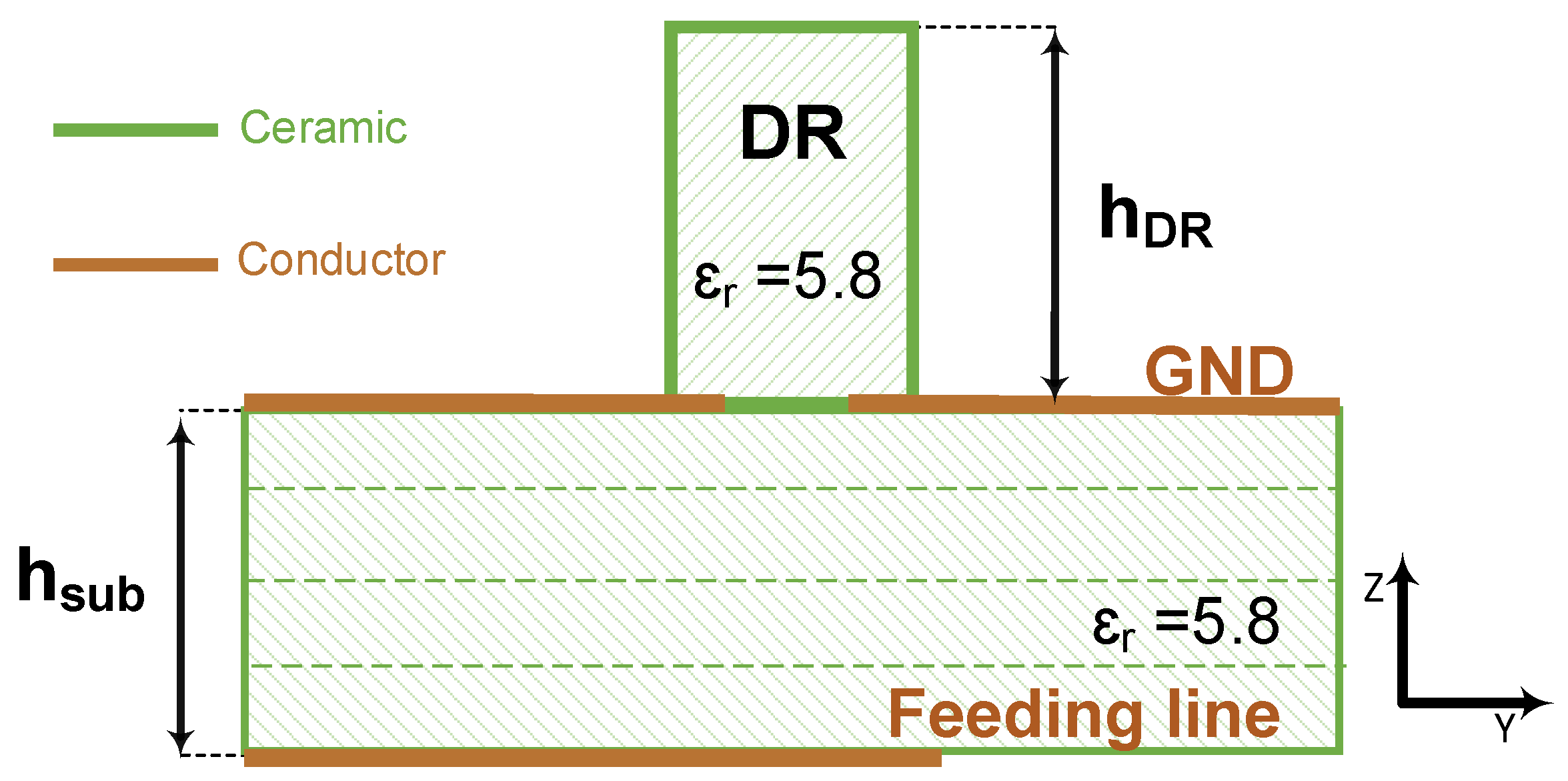



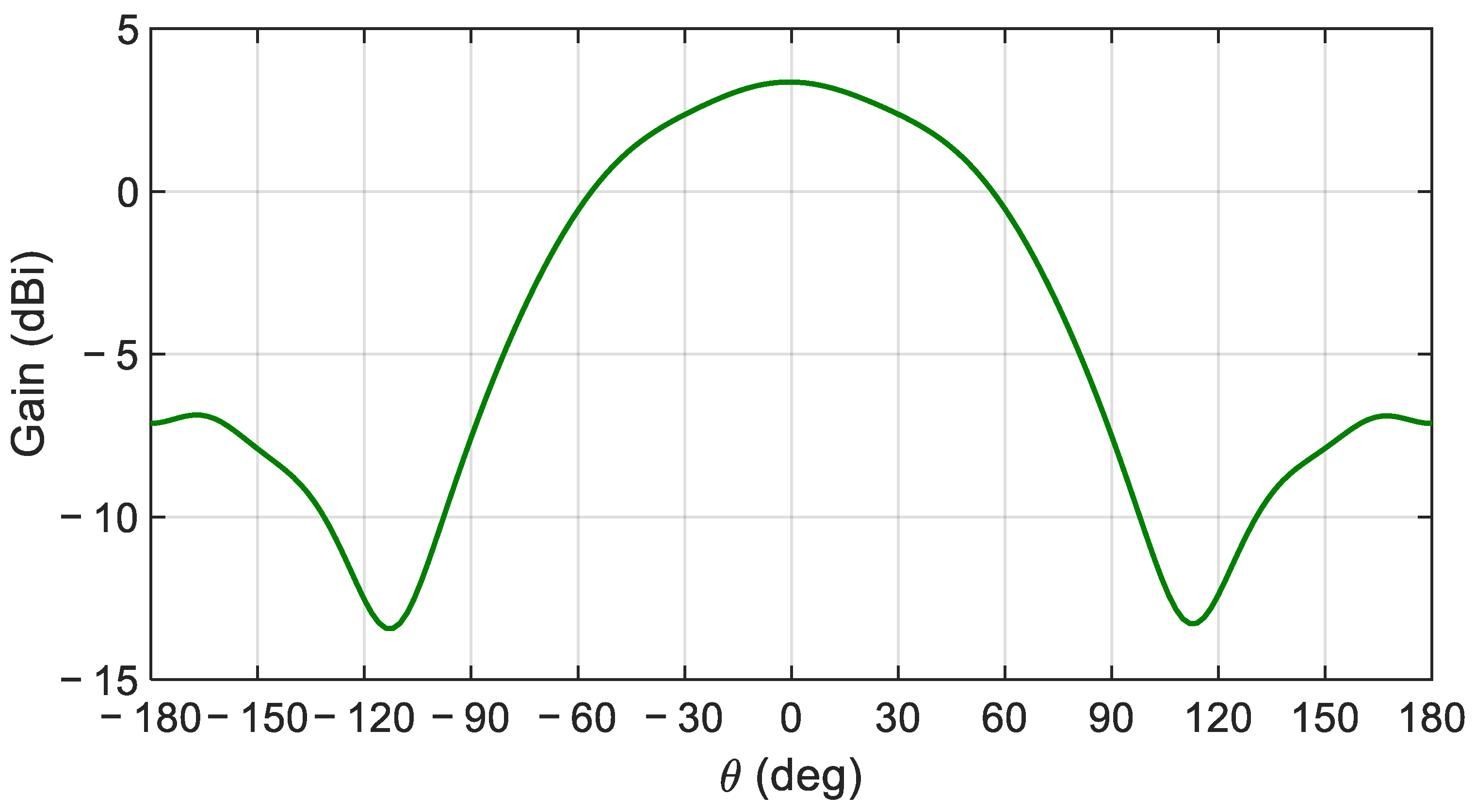
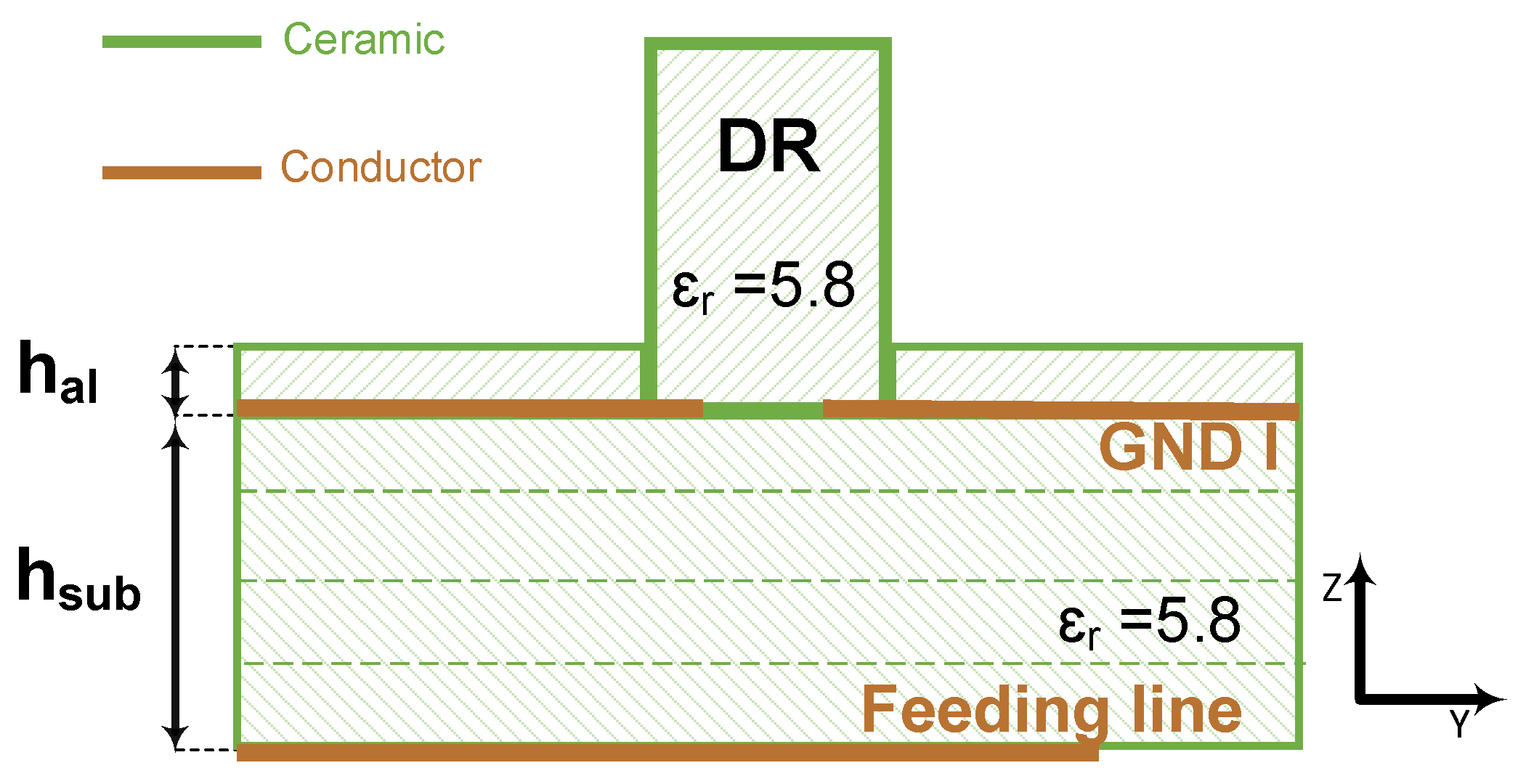

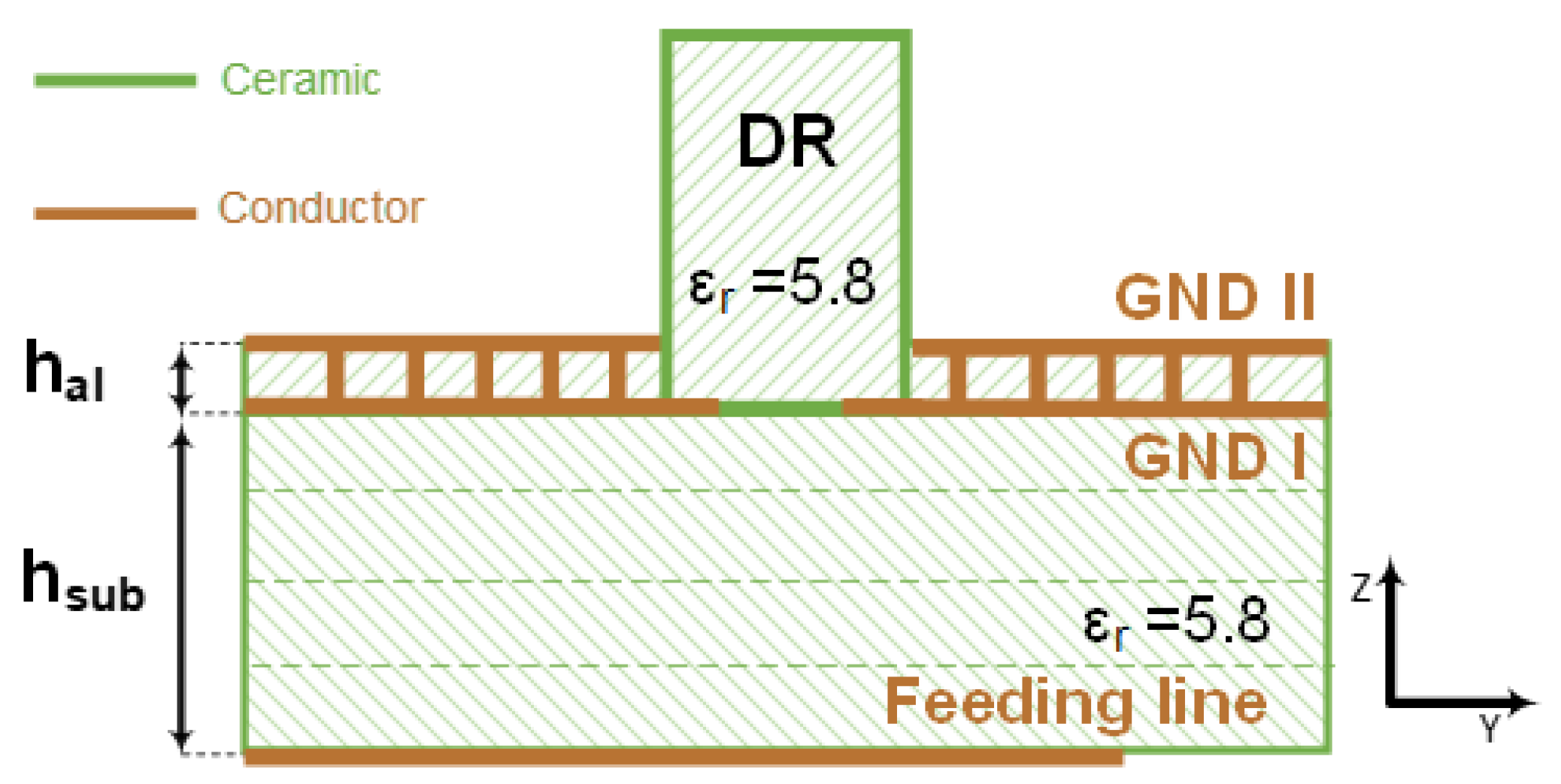
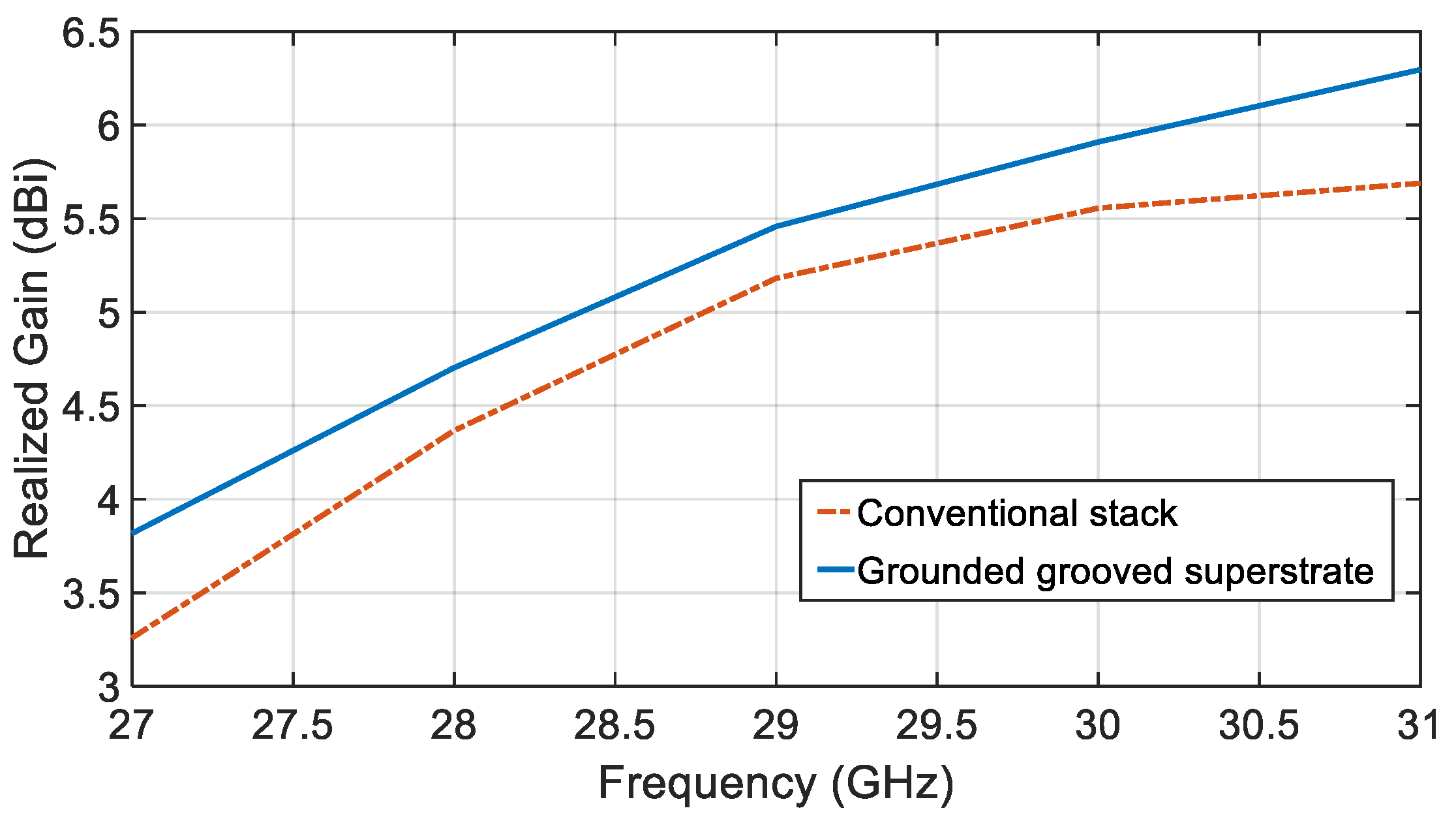

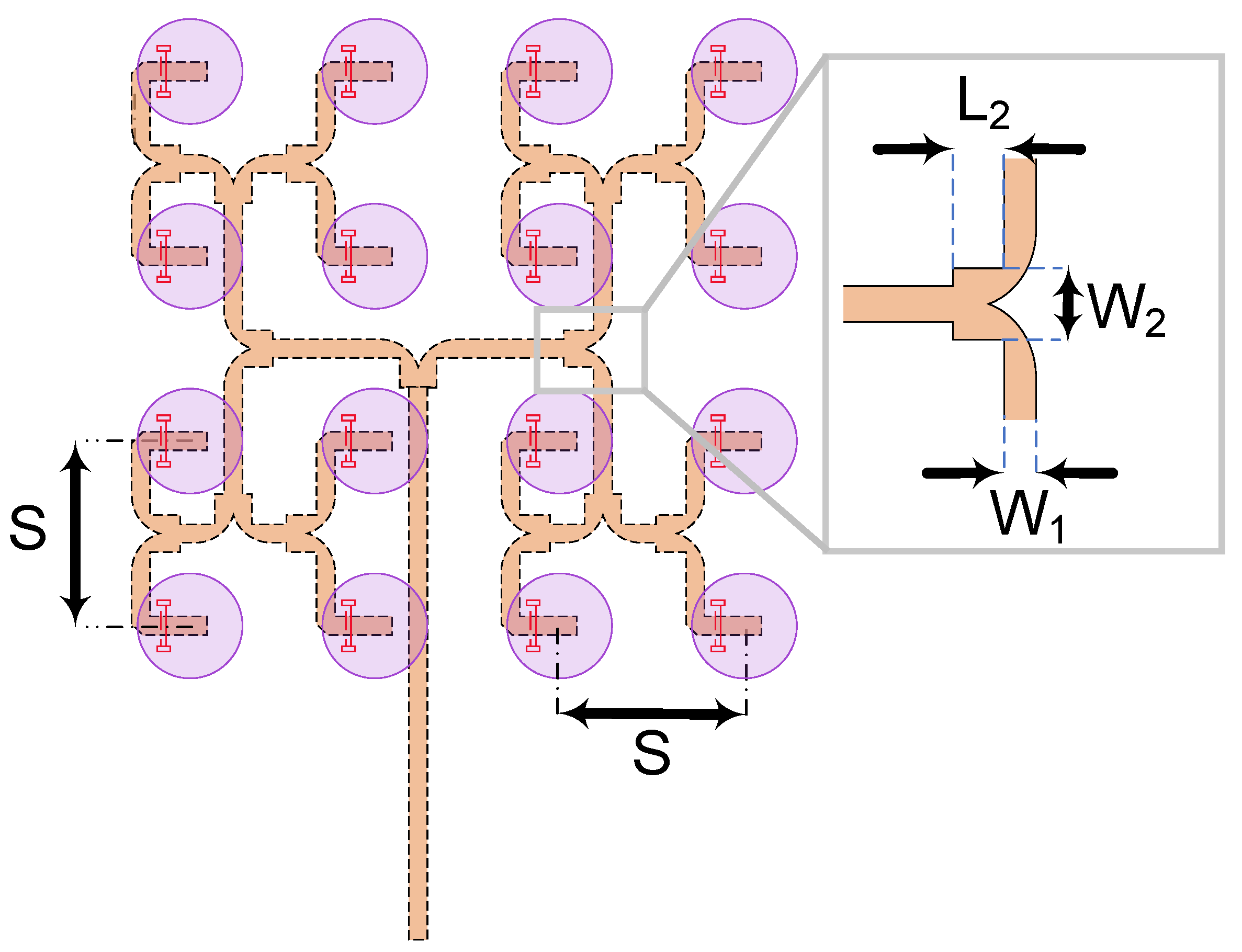
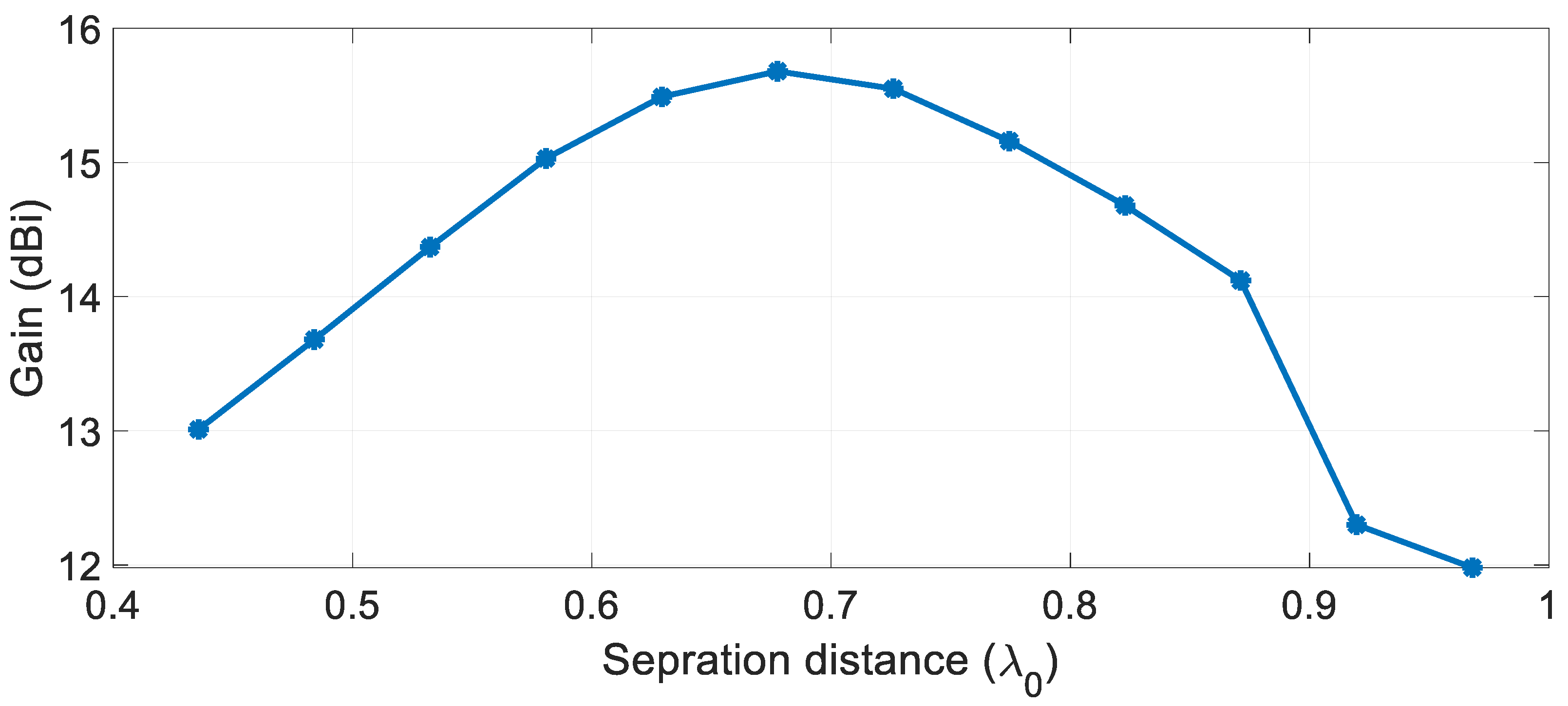
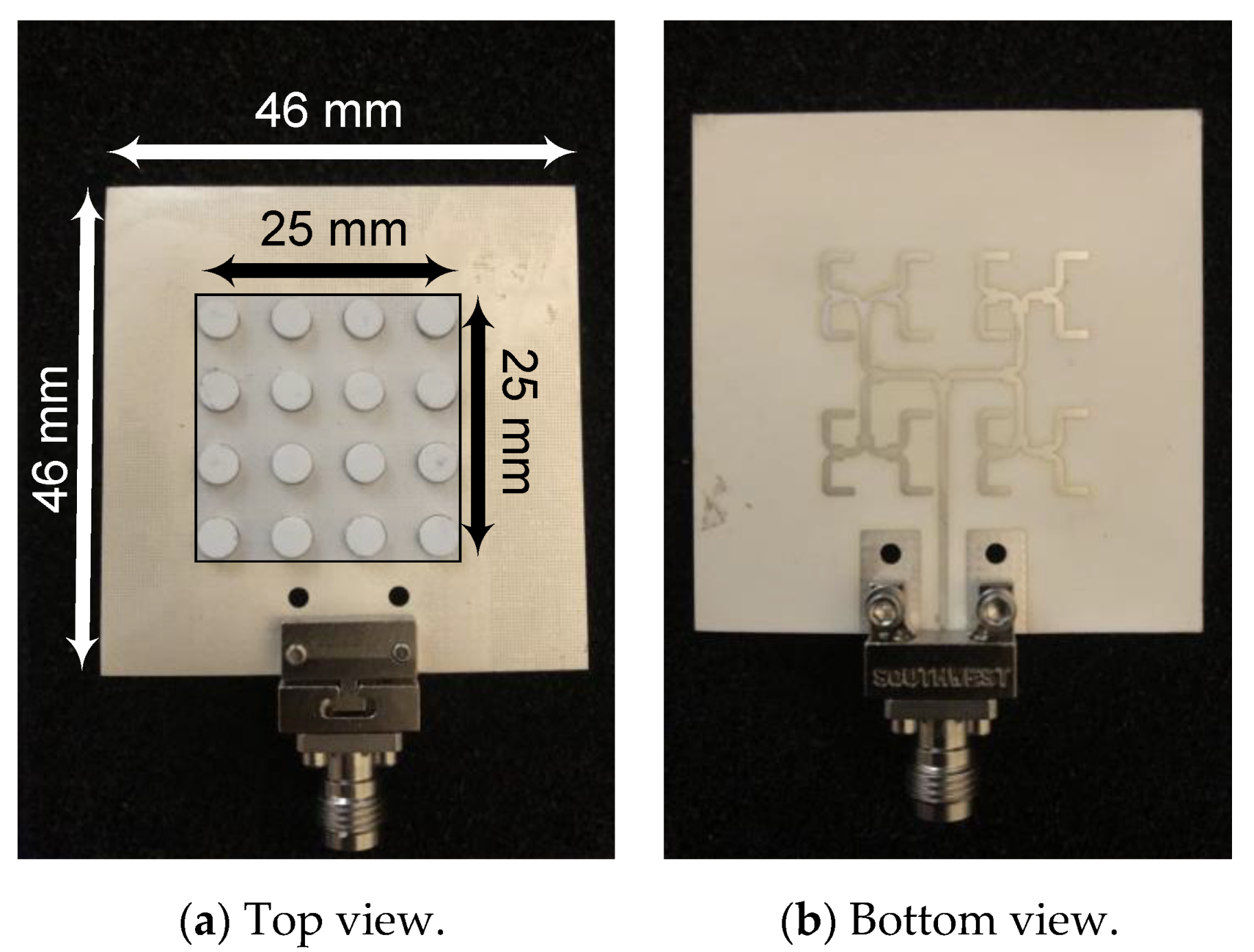
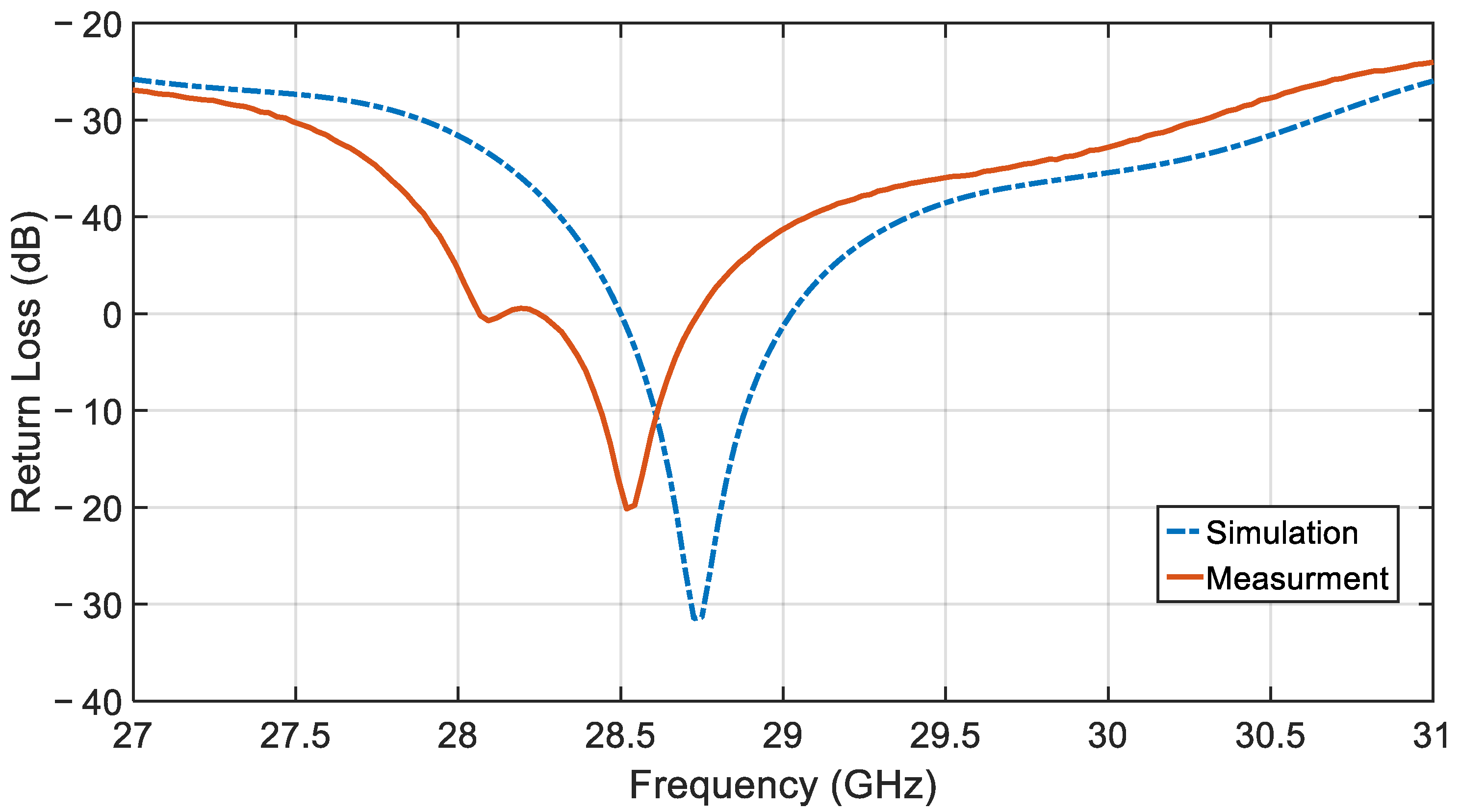
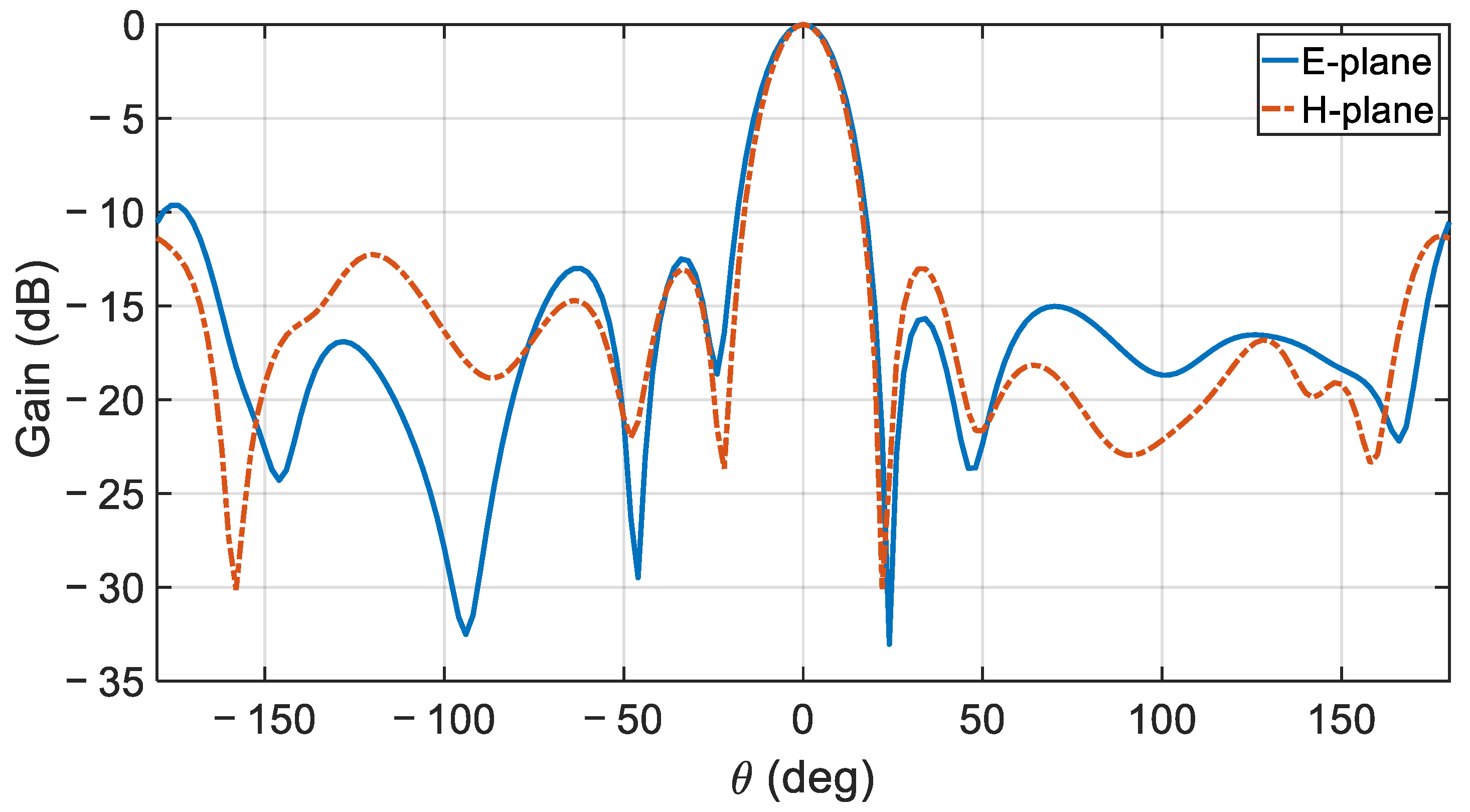
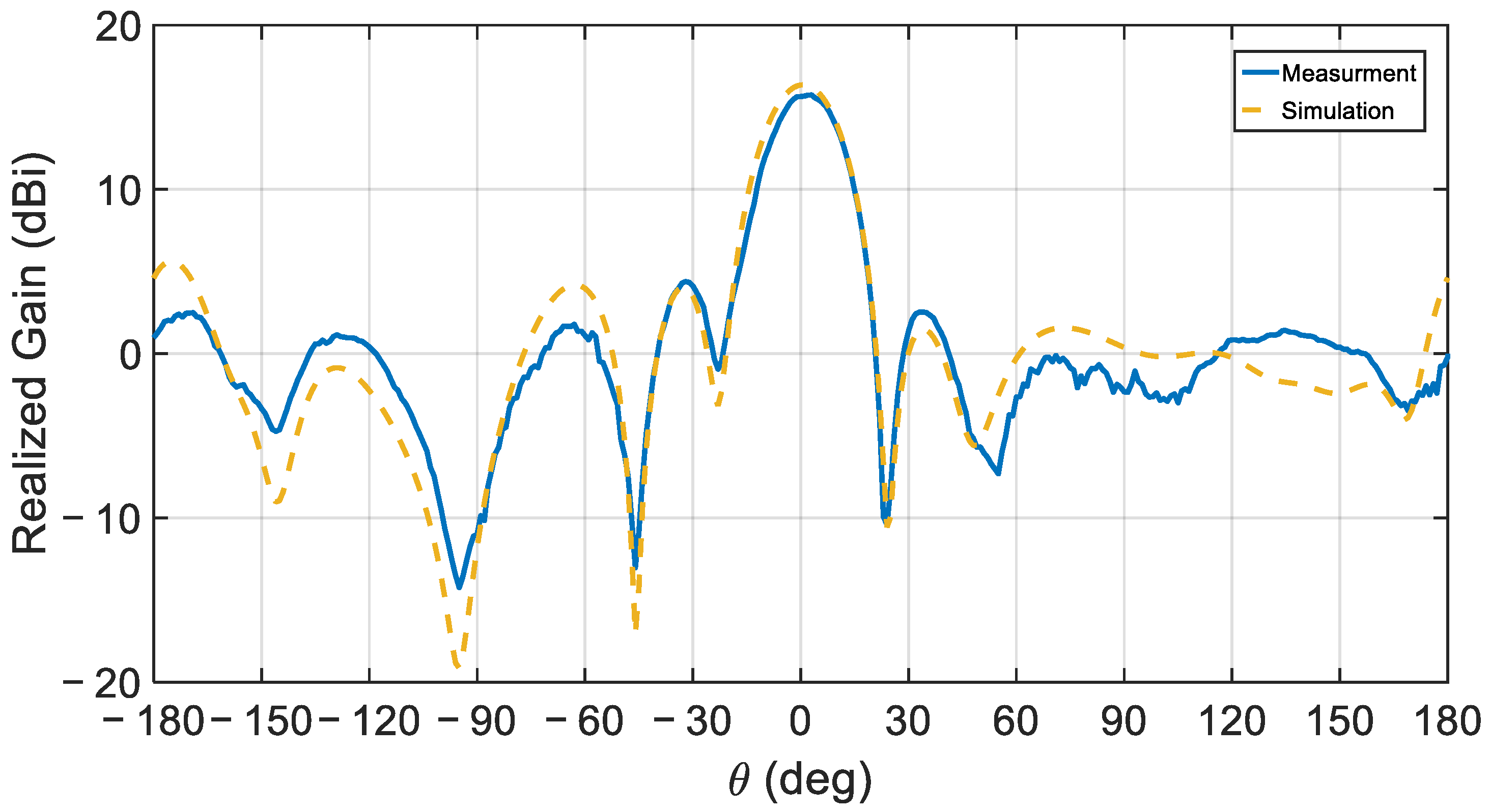
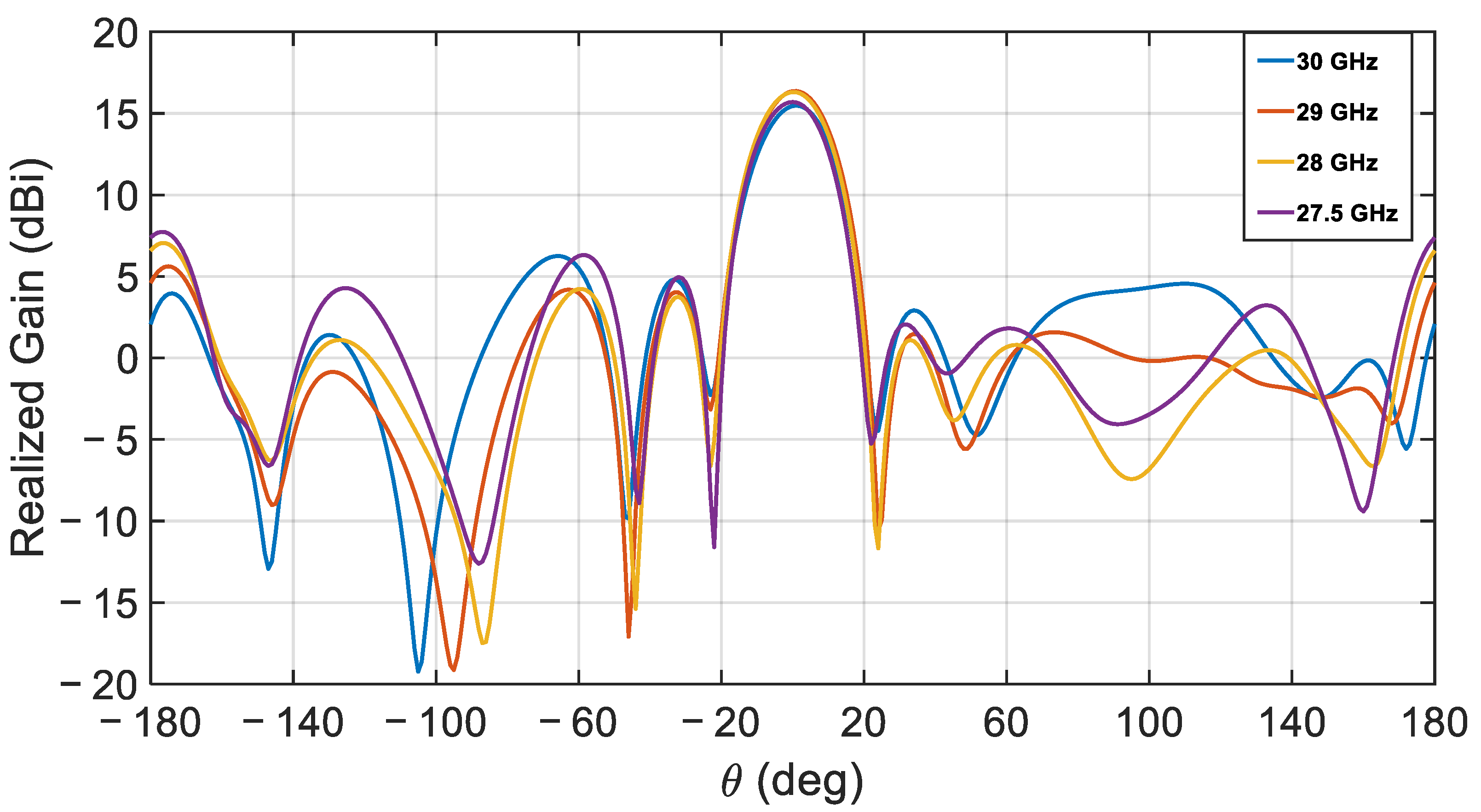
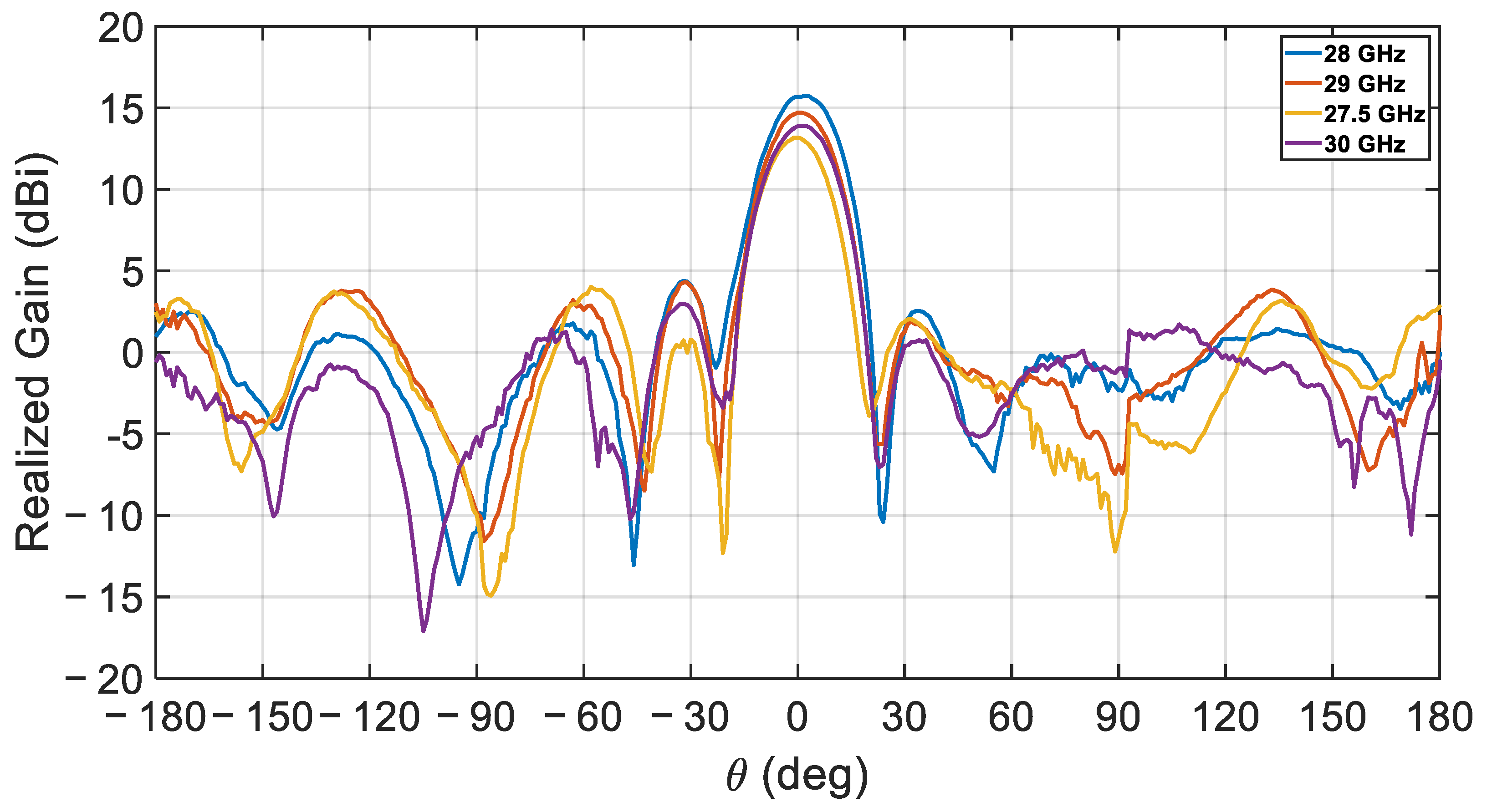

| Parameters | Value (mm) | Description |
|---|---|---|
| Lsrm | 0.5 | Slot arm length |
| Wsrm | 0.2 | Slot width |
| Ws | 1.75 | Slot length |
| Lo f | 1 | Offset length |
| rDR | 1.95 | Dielectric radius |
| hDR | 1.45 | Dielectric height |
| hsub | 0.50 | Substrate thickness |
| wf | 1.75 | Microstrip width |
| Ref. | Center Frequency (GHz) | Bandwidth (%) | Gain (dBi) | Efficiency (%) | Elements | |
|---|---|---|---|---|---|---|
| This work | 28.7 | 9.81 | 15.68 | 88 | 16 | |
| DRA | [36] | 36.7 | 6.81 | 12 | 91 | 12 |
| [3] | 25.7 | 1.16 | 16.3 | 74 | 4 | |
| [37] | 29 | 3.3 | 7 | 80 | 4 | |
| [38] | 36 | 5.5 | 21.6 | 89 | 64 | |
| Patch | [10] | 28 | 6.3 | 21 | - | 42 |
| [39] | 29 | 6 | 13 | 75 | 8 | |
| [40] | 28 | 2.6 | 11 | 70 | - | |
Publisher’s Note: MDPI stays neutral with regard to jurisdictional claims in published maps and institutional affiliations. |
© 2021 by the authors. Licensee MDPI, Basel, Switzerland. This article is an open access article distributed under the terms and conditions of the Creative Commons Attribution (CC BY) license (https://creativecommons.org/licenses/by/4.0/).
Share and Cite
Niayesh, M.; Kouki, A. LTCC-Integrated Dielectric Resonant Antenna Array for 5G Applications. Sensors 2021, 21, 3801. https://doi.org/10.3390/s21113801
Niayesh M, Kouki A. LTCC-Integrated Dielectric Resonant Antenna Array for 5G Applications. Sensors. 2021; 21(11):3801. https://doi.org/10.3390/s21113801
Chicago/Turabian StyleNiayesh, Mohsen, and Ammar Kouki. 2021. "LTCC-Integrated Dielectric Resonant Antenna Array for 5G Applications" Sensors 21, no. 11: 3801. https://doi.org/10.3390/s21113801
APA StyleNiayesh, M., & Kouki, A. (2021). LTCC-Integrated Dielectric Resonant Antenna Array for 5G Applications. Sensors, 21(11), 3801. https://doi.org/10.3390/s21113801






